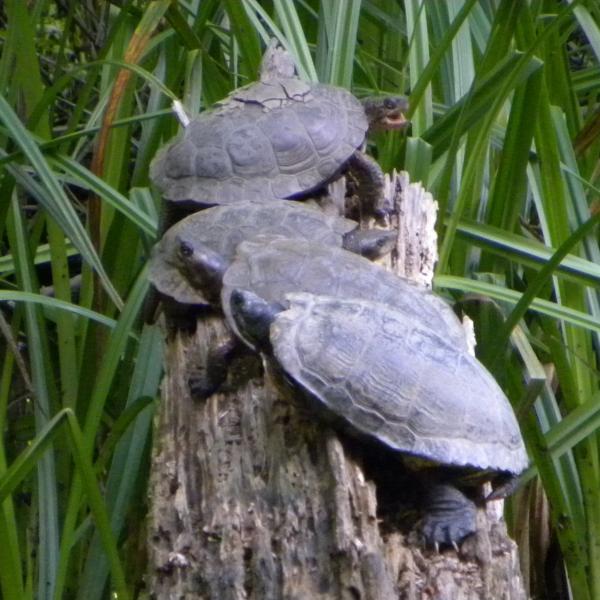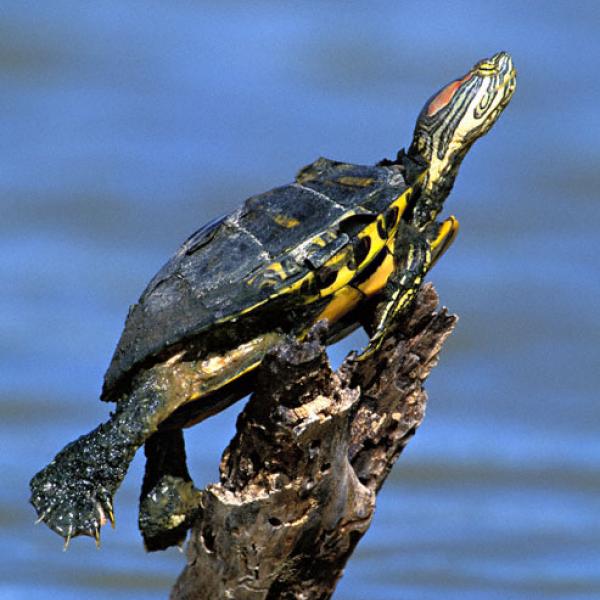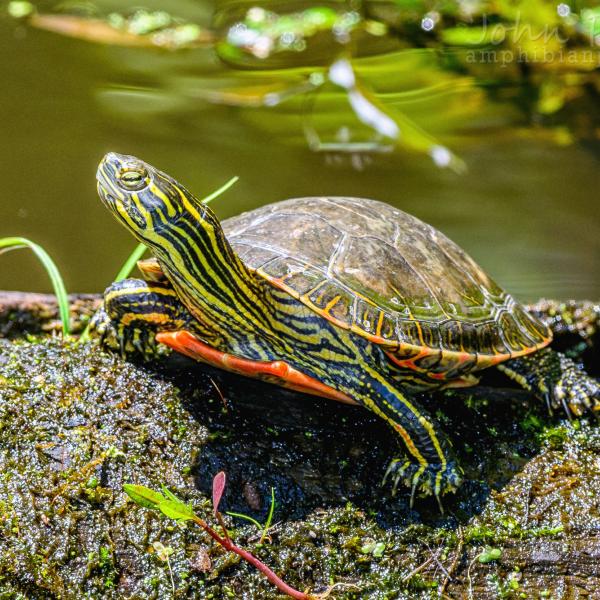Ponds are prime habitat for turtles. Here they feed on aquatic plants, frog and newt eggs, and carrion. You can often see them basking on a floating log or other structure. Their time in the sun is essential to shell development and overall health.
Western Pond Turtle
The western pond turtle is California's only native freshwater turtle. Unfortunately, this California “species of special concern”, has experienced population reductions of 75 – 80% due to loss of habitat, predation and competition from non-native species, such as red-eared sliders.
Many Midpen preserves provide habitat for western pond turtles including La Honda Creek, Windy Hill, Russian Ridge, Bear Creek Redwoods, and Sierra Azul Open Space Preserves. They can generally be seen in aquatic areas (ponds, lakes, creeks and rivers), but they will leave water to search for food, more water, or to lay their eggs in the spring. Females create nests in sunny, grassy areas adjacent to streams or ponds. If you see a turtle in these upland areas, do not disturb them, and contact us so that we can monitor potential nesting sights.

Western Pond Turtle
(Actinemys marmorata)
Native species
- Mottled dark markings on the head without stripes
- Rear edge of shell is smooth, not serrated, not marked with red
- A pattern of spots or lines radiates from the centers of the scutes on the shell.
- There is no red coloring on the shell or plastron.
Non-native Turtles
Non-native species such as red-eared sliders and painted turtles can infiltrate sensitive habitat when unwanted pets are are “set free” by their owners. Unwanted turtles and other animals should never be released into the wild. Please contact a local wildlife rescue agency if you can no longer care for your pets.

Red-eared Slider
(Trachemys scripta elegans)
Non-native species
- Red stripes behind the eyes
- Rear edge of shell is serrated, not marked with red.
- Shell usually has a network of yellow lines, though often they are not visible.
- There is no red coloring on the shell or plastron.

Western Painted Turtle
(Chrysemys picta bellii)
Non-native species
- Yellow stripes on the head with no red
- Rear edge of shell is smooth, not serrated, and usually marked with red.
- The front edge of the shields are bordered with red or yellow.
- Red is usually seen on the underside and edges of the shell.
Help us
Midpen has launched a community science program with our volunteers to monitor western pond turtle use of pond habitat within our preserves. You can help as well, by adding your turtle observations to the Midpen Biodiversity Index on iNaturalist.
Your reports will help our Natural Resources staff document and better understand the turtles in our preserves. Confirmed breeding activity (behavior, nest location, eggs, and hatchlings) is very valuable to Midpen and will enable us to protect sensitive areas appropriately.
Keep our preserves healthy and wild
- Protect native species by never releasing pets such as turtles, fish, frogs, lizards, snakes, ducks or geese into the wild.
- Keep wildlife healthy and wild by never feeding.
- Pack it in - pack it out. Leave no litter behind. Litter is ugly and can endanger wildlife.
Contact your local rescue or animal care facility for information on safely and humanely surrendering an unwanted pet.
- Peninsula Humane Society & SPCA
- Bay Area Turtle and Tortoise Rescue: 510-886-2946
- Bay Area Amphibian & Reptile Society
- Joe and Wendy’s Reptile Rescue: 707-557-5213

